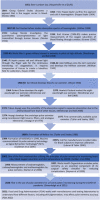A review of the effect of skin pigmentation on pulse oximeter accuracy
- PMID: 37172609
- PMCID: PMC10391744
- DOI: 10.1088/1361-6579/acd51a
A review of the effect of skin pigmentation on pulse oximeter accuracy
Abstract
Objective. Pulse oximetry is a non-invasive optical technique used to measure arterial oxygen saturation (SpO2) in a variety of clinical settings and scenarios. Despite being one the most significant technological advances in health monitoring over the last few decades, there have been reports on its various limitations. Recently due to the Covid-19 pandemic, questions about pulse oximeter technology and its accuracy when used in people with different skin pigmentation have resurfaced, and are to be addressed.Approach. This review presents an introduction to the technique of pulse oximetry including its basic principle of operation, technology, and limitations, with a more in depth focus on skin pigmentation. Relevant literature relating to the performance and accuracy of pulse oximeters in populations with different skin pigmentation are evaluated.Main Results. The majority of the evidence suggests that the accuracy of pulse oximetry differs in subjects of different skin pigmentations to a level that requires particular attention, with decreased accuracy in patients with dark skin.Significance. Some recommendations, both from the literature and contributions from the authors, suggest how future work could address these inaccuracies to potentially improve clinical outcomes. These include the objective quantification of skin pigmentation to replace currently used qualitative methods, and computational modelling for predicting calibration algorithms based on skin colour.
Keywords: COVID-19; accuracy; photoplethysmography; pulse oximetry; skin pigmentation.
Creative Commons Attribution license.
Figures





References
-
- Abay T Y, Kyriacou P A. Photoplethysmography in oxygenation and blood volume measurements. In: Kyriacou P, Allen J, editors. Photoplethysmography: Technology, Signal Analysis, and Applications. 1st edn Amsterdam: Elsevier; 2021.
-
- Agache F, Fanian H, Maibach I, Humbert P. Agache’s Measuring the Skin. 2nd edn. Cham, Switzerland: Springer; 2017. pp. pp 549–62.
Publication types
MeSH terms
Substances
Grants and funding
LinkOut - more resources
Full Text Sources
Other Literature Sources
Medical
